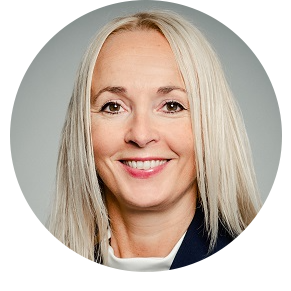Change is coming

 The subject of climate risk is a complex one, driven by evolving regulation and developing knowledge on the topic. This is driving a widening of expectations in the way that asset managers and pension schemes manage and report on climate risks.
The subject of climate risk is a complex one, driven by evolving regulation and developing knowledge on the topic. This is driving a widening of expectations in the way that asset managers and pension schemes manage and report on climate risks.
The conversation is evolving: The rise of natural capital
In combination with climate change, the risk of biodiversity loss and degradation of ecosystems will become an important part of environmental risk assessments undertaken by asset managers and pension schemes. Why? Because companies and bond issuers in which asset managers and pension schemes invest will depend directly on nature for operations, supply chain performance, real estate asset values, physical security and business continuity. Many companies may also have hidden dependencies on nature and biodiversity in their supply chains.
According to the World Economic Forum, the world’s 7.6 billion people represent only 0.01% of all living things by weight. However, humanity has already caused the loss of 83% of all wild mammals and half of all plants. Furthermore, more than half the world’s GDP is moderately dependent on nature. As population growth expanded, along with the demand for goods and services, it has come at a high cost to the natural world, leading to biodiversity loss.
It’s no surprise therefore, that new frameworks are being developed on how companies can address risks and opportunities when it comes to nature and biodiversity. One such framework is the Taskforce on Nature-Related Financial Disclosures (TNFD), which builds on the Taskforce for on Climate Related Financial Disclosures (TCFD). TNFD is scheduled to release its reporting recommendations in 2023, which seeks to incorporate nature-related risk and opportunity analysis into corporate and financial decision making.
Nature-based environmental objectives also sit at the heart of the EU’s taxonomy regulation. ‘Sustainable use and protection of water and marine resources’, alongside ‘protection and restoration of biodiversity’ form part of the EU Taxonomy’s six environmental objectives. Although the scope of EU Taxonomy is initially focused on ‘climate change adaption’ and ‘climate change’ mitigation, the remaining objectives have a mandatory application deadline on January 2023 – that’s not far away.
We also find that in our discussions with asset managers and pension schemes, the concept of ‘double materiality’ is starting to emerge – where a company simultaneously reports on sustainability factors that are financially material to its business and material to the environment and people. This reflects an expansion of thinking by market participants in considering the impact of climate and transition policies on the environment and society – this is an area that we believe will become fully integrated into risk assessments.
Attention is turning to corporate and fund board governance
It’s important that asset management boards and fund boards begin to develop their frameworks around how they are managing climate risk.
Central banks and regulators will be more heavily focused around how financial services industry participants manage climate-related risks, which will include how these risks are integrated into existing governance and risk management frameworks. Fund boards, for example, should now be considering how they are considering climate-related challenges with respect to the funds they oversee, and how they are addressing their data needs to access climate risks across each fund. Having a strong governance framework around climate risks will be an important part in improving value on behalf of investors and demonstrating that considering climate impact is not just a ‘box-ticking’ exercise.
As the impact on climate change across the industry becomes more well-understood, shareholders and investors alike will expect that climate risks are disclosed transparently. At CACEIS, we believe that simply meeting minimum regulatory requirements on disclosures will not be sufficient because the demand from shareholders and investors for more information and action will grow.
Access to good quality data is not just a requirement for investment teams. It will become a high priority for corporate and fund boards to help in their governance decision-making. And the sooner they can get their hands on data, the more knowledge they will gain, and they’ll be well-prepared to manage the evolving regulation in this area.
As independent stewards of capital, custodians are quickly developing expertise in this area with ESG and climate data reporting, integrating information, for example, from sustainability research providers such as Sustainalytics, Trucost or MSCI. The independent nature of custodians often lends itself to strengthening levels of governance, which will become an important area when reporting on climate risks.
We have to get comfortable with lots of change. And this is quite a step change for us all. However, it’s central to maintaining investor trust in the industry to the climate challenge. Asset managers and securities services firms are ultimately stewards of capital, and we are all in a unique position of responsibility to make real change and look after the interests of investors and pension scheme members.
At the end of the day, this is all about sustainable governance and you can read more about our thought on this topic here >>
Join Pat Sharman at IMpower Incorporating FundForum 2022. Find out more about the agenda and speakers here >>
